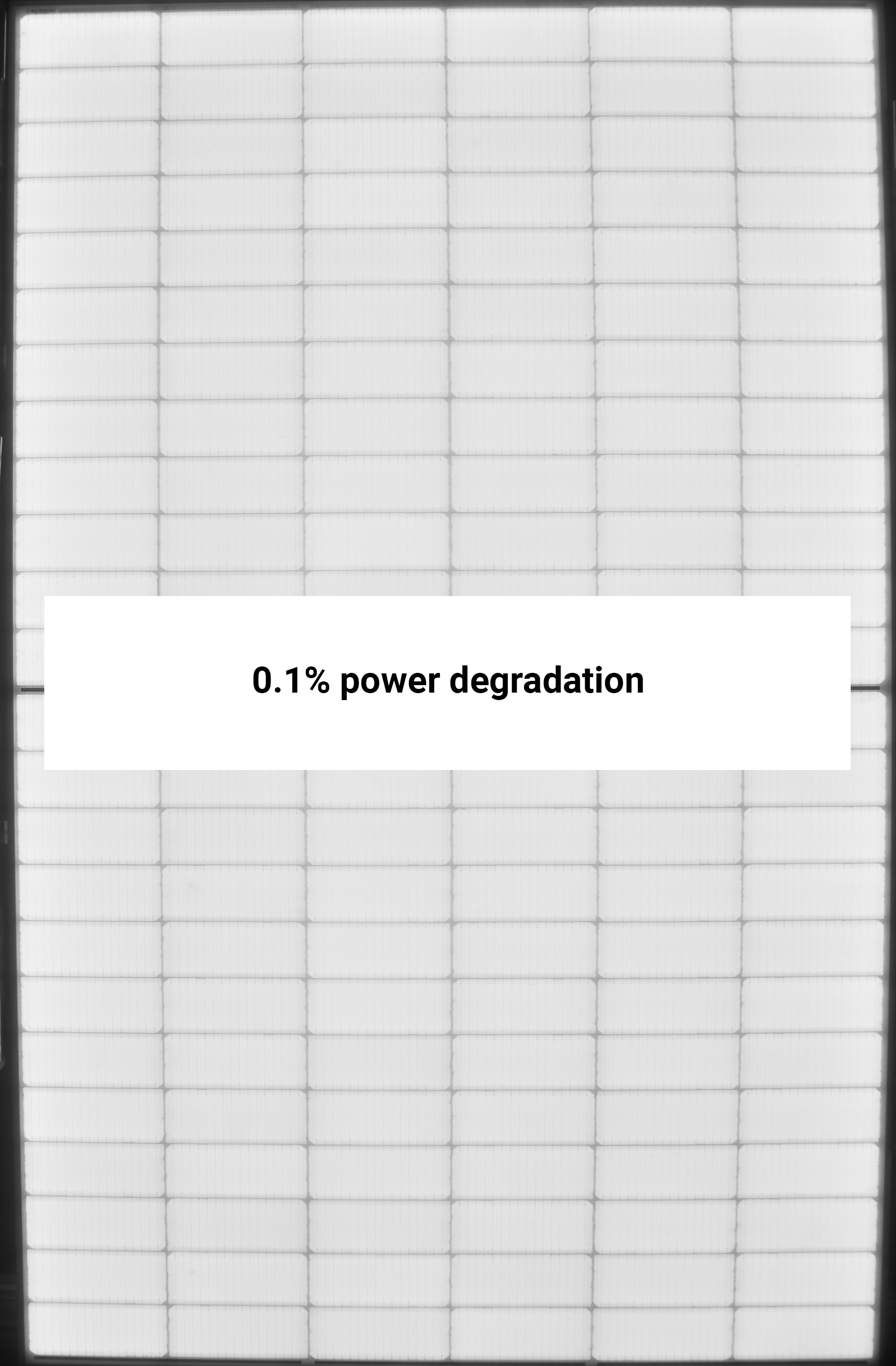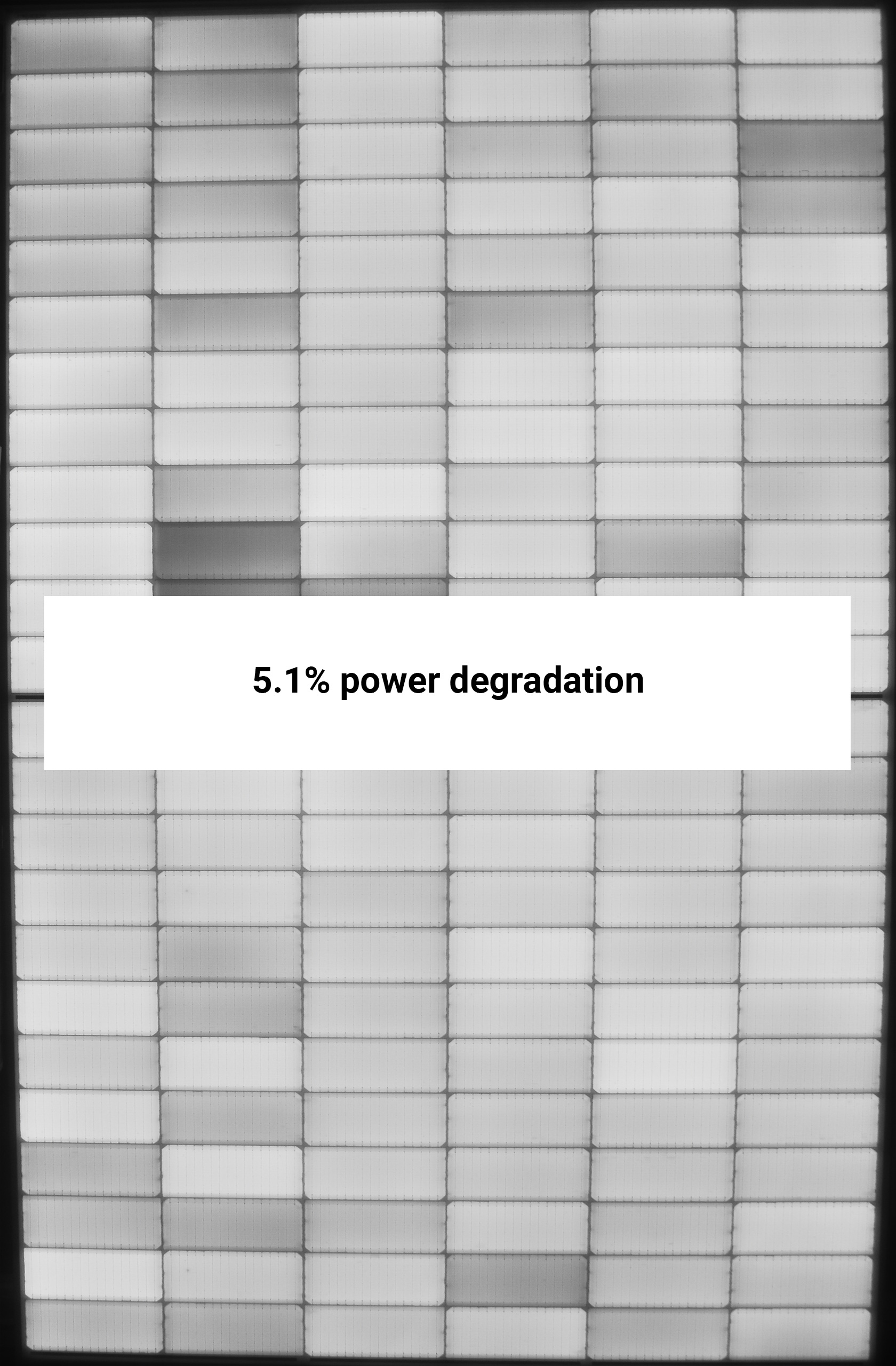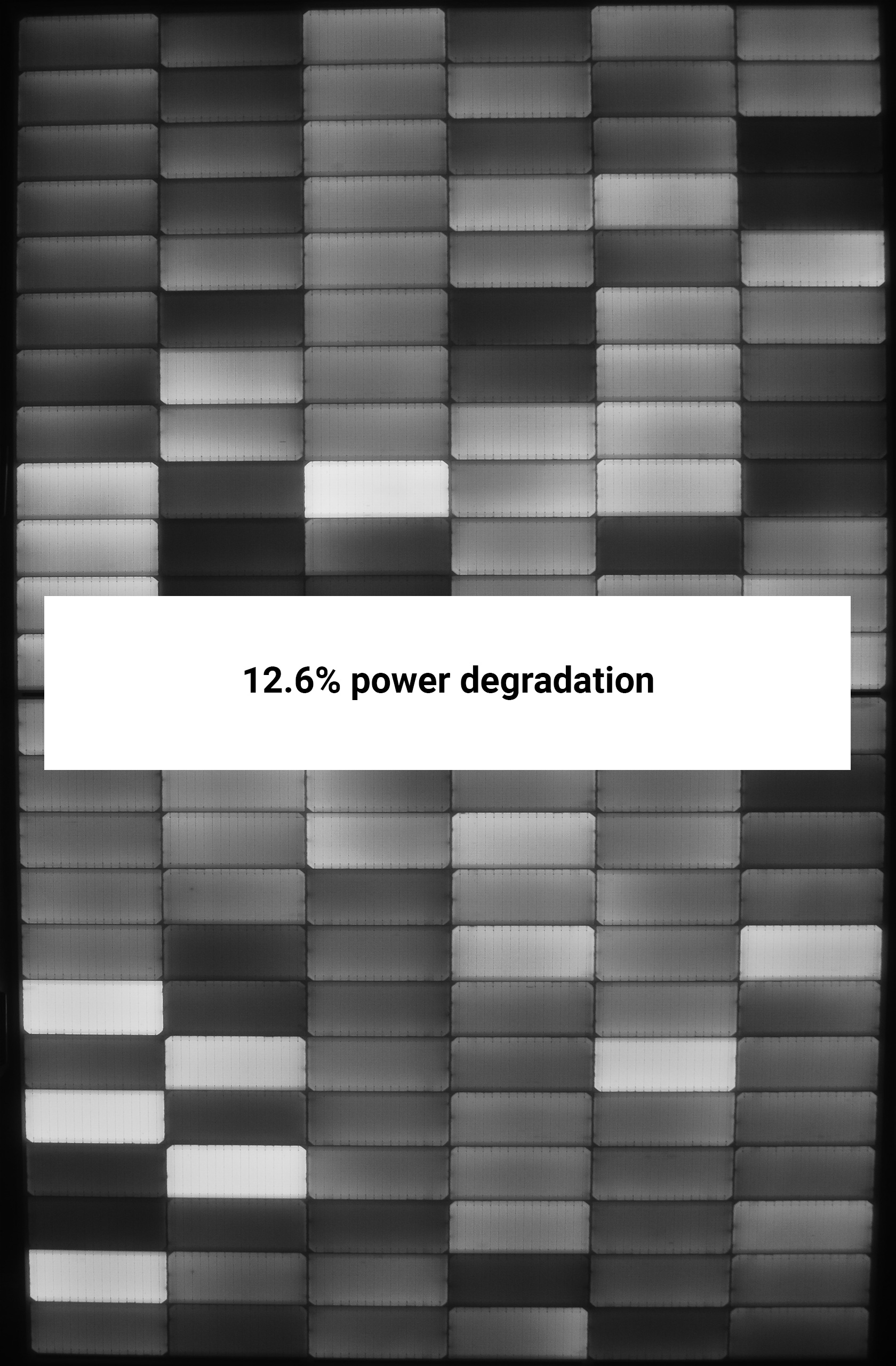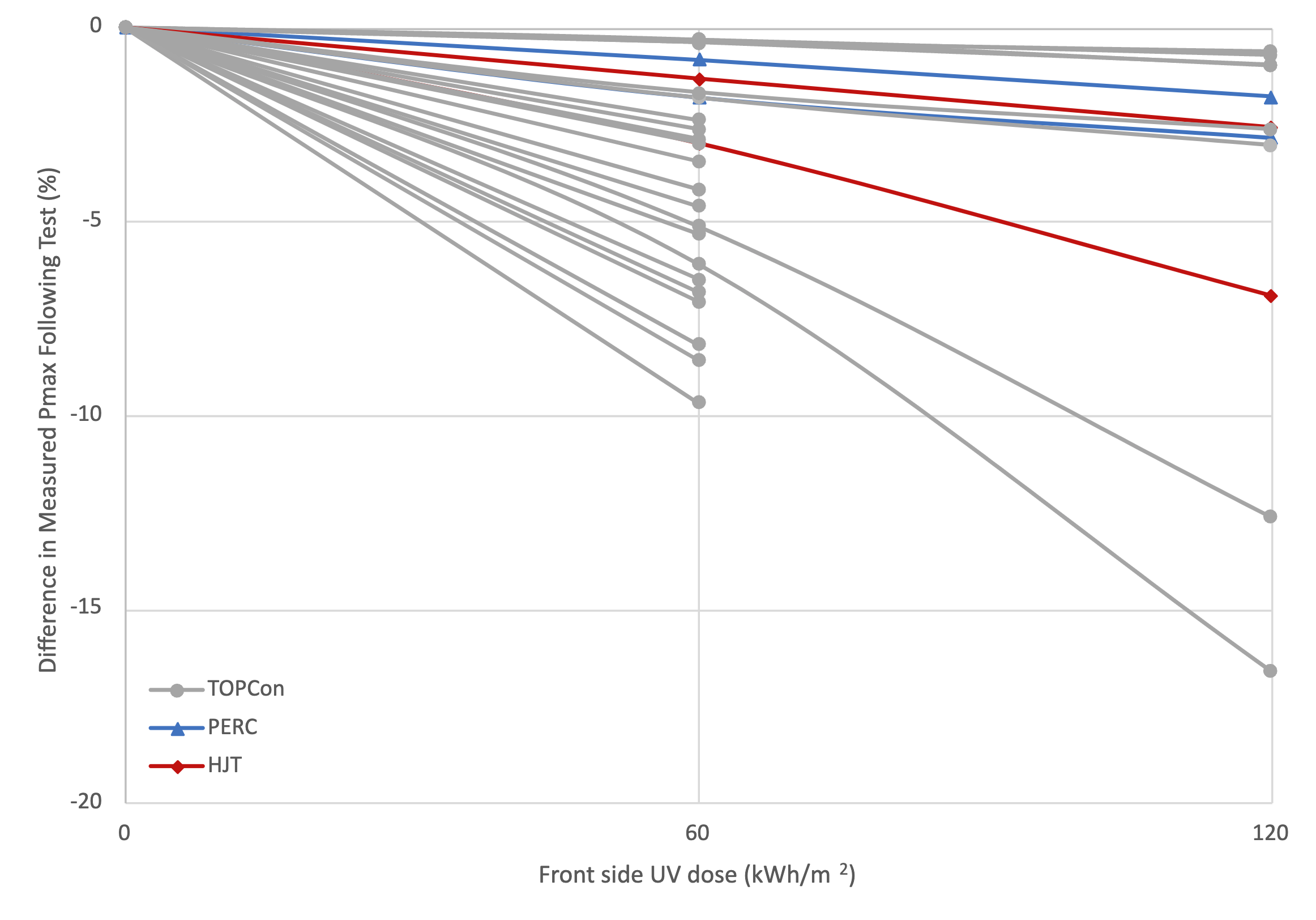The median and average UVID power loss across 10 BOMs tested was 2.2% and 3.5%, respectively, with only half of the BOMs tested having less than 2% degradation. Considering 120 kWh/m2 is only representative of 6~24 months of outdoor exposure (depending on location), these initial UVID results raise significant concerns for module warranty compliance.
Key
Takeaways
The degradation following 120 kWh/m2 of UVID ranged from 0.6% to 16.6%.
UVID-stable TOPCon BOMs are possible, but some manufacturers have work to do.
Four of the TOPCon BOMs tested had degradation less than 1% following the full test, showing that producing UV-stable TOPCon modules is possible. On the other hand, five different TOPCon BOMs degraded by more than 5% on average after just 60 kWh/m2. These manufacturers were typically quite surprised by the results.
Initial results show HJT susceptibilities and higher degradation for PERC than expected.
While there are more in the UVID test queue, Kiwa PVEL has only tested two PERC BOMs and two HJT BOMs for UVID at the time of Scorecard publication. The degradation was 2.6% and 6.9% for the HJT BOMs and, somewhat surprisingly, 1.8 and 2.9% for the PERC BOMs, which were expected to show lower degradation rates.
The degradation mechanisms behind UVID are not fully understood.
UVID is a relatively new phenomenon and brings a host of uncertainties that warrant thorough investigation. Research efforts are ongoing across the industry, pursuing deeper insights into this degradation mode. More testing is underway at Kiwa PVEL, the results of which will further illuminate our collective understanding of UVID and its implications.
Test Result Spotlight
Since introducing the UVID test as part of the updated PQP in November 2023, Kiwa PVEL has started to identify commercially available BOMs that suffer significant degradation following UV exposure. In this example, the power loss was just over 5% following a 60 kWh/m2 UV dose and exceeded 12% following 120 kWh/m2. The EL images of UV-susceptible modules typically exhibit a ‘checkerboard’ pattern that is also seen in LETID-susceptible modules, indicating that cells are not uniformly affected by UVID stresses.
Power Degradation of UVID Modules
Procure better modules. Get access to the Scorecard data every quarter.
Sign up as a Kiwa PVEL Premium Partner




